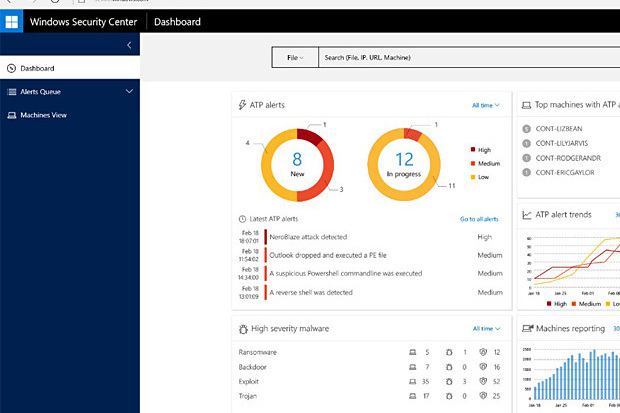Microsoft reveals details on Windows Defender “on steroids”, for enterprise
Windows 10’s enhanced security features have been a primary item on Microsoft’s agenda, since the very first inception of the operating system, not only from a software standpoint, but also in reference to hardware-based security that integrates technologies like Bitlocker and Secure Boot.

No matter the edition of Windows you are using, at least one form of data encryption is always available. For instance, Pro and Enterprise users of Windows 10, are able to encrypt individual files and folders, whether they are on the main system volume C:, or on a separate drive, such as external storage device, like a flash drive, or an SSD via external enclosure.
Bundled with Windows 10, is Windows Defender, Microsoft’s own brand of cyber security suite, designed to protect Windows 10 users from most attacks. While Windows Defender has not yet earned praises, when compared to other third party products, such as Symantec’s Norton Internet Security, or BitDefender, Microsoft seems to be determined in developing Windows Defender beyond its limitations, at least for the enterprise sector.
Microsoft’s own Terry Myerson, has made an announcement, this morning, in regard to a new version of Windows 10’s own security software, in the form of Windows Defender ATP, which stands for “Advanced Threat Protection”.
As mentioned earlier, Windows Defender ATP is being developed primarily for business customers, and organizations looking to curb the advent of security breaches.
According to Myerson, “...thousand of attacks were reported in 2015 alone...”. Each attach took an average of 200 days to detect, and 80 days to fix. Aside from the considerable expense required to recover from loss of data and to bring networks back to health, which can reach up to $12 million per incident, Myerson points out the impact a large scale attack can have on the reputation of a company, as it happened in recent years with corporations as large as Target, with thousand of locations impacted nationwide, due to point of sale breaches.
Microsoft’s objective, is to develop Windows Defender ATP to offer advanced security detection through “..the world’s largest array of sensors...”, aided by experts from third party security partners.
Finally, also according to Myerson, the next generation of Windows Defender will be built with tighter integration in Windows 10, and access to anonymous aggregate data usage collected through sensors across millions of Windows 10 devices, like Surface Pro tablets and Surface Book PCs, as well as Windows 10 phones. By this token, Windows Defender will be able to detect threats as they happen, and create a more accurate trace to the closest source of an attack. Particularly helpful applications include detection and trace of ransomware to its point of origin, or the origin of the first systems affected.
At this time, Windows Defender ATP is not available to the public, and it won’t be until some time after it will be made available to enterprises on a larger scale.